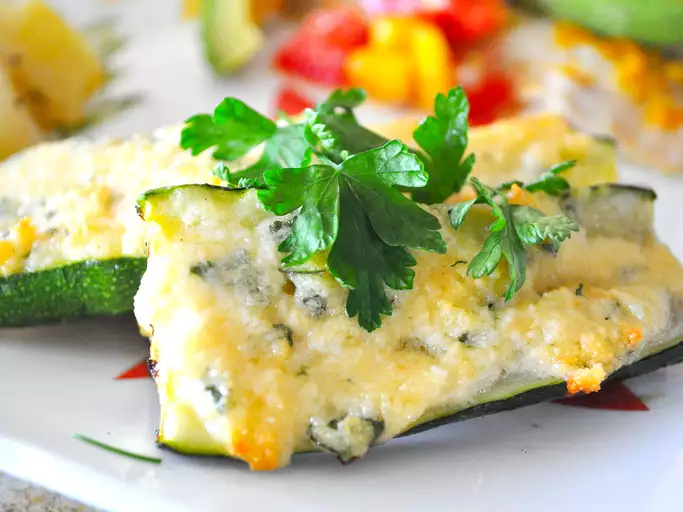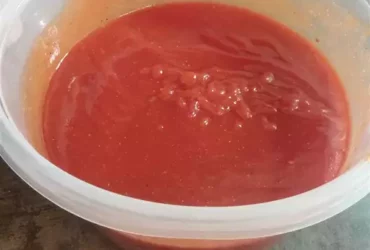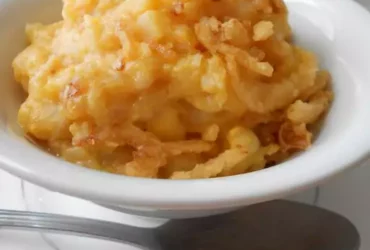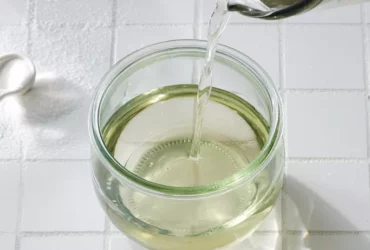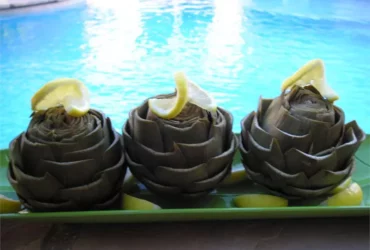Ingredients
Main Ingredients
The main ingredients for Blackened Salmon Fillets recipe typically include:
- A combination of aromatic spices, herbs, and seasonings to create a unique flavor profile. The key components are:
- Salmon fillets: Fresh salmon is the star of this recipe, providing a tender and flavorful base for the dish.
- Blackening spice blend: A custom mix of spices, herbs, and other ingredients that contribute to the distinctive “blackened” flavor and crust. This often includes:
- Cayenne pepper: Adding a touch of heat to the dish
- Garlic powder: Enhancing the overall savory flavor
- Paprika: Contributing a slightly sweet, smoky taste
- Onion powder: Adding depth and richness to the spice blend
- Thyme: Providing a hint of herbal freshness
- Lemon peel: Incorporating citrus notes for added brightness
- Olive oil or other cooking oil: Used to brush the salmon fillets before blackening
- Butter or non-stick spray: Optional, but helps prevent sticking during cooking
- Lemon wedges (optional): For serving and adding a burst of citrus flavor to each bite
4 salmon fillets (preferably wild caught)
The key to achieving that perfect blackened crust lies in the quality and selection of ingredients, particularly the salmon fillets.
We recommend using wild caught salmon, which has a more robust flavor profile compared to farmed salmon. The flavor and texture of wild caught salmon are unmatched, making it the perfect choice for this Blackened Salmon Fillets Recipe.
For four servings, you’ll need to purchase four salmon fillets that weigh around 6 ounces each. You can ask your local fishmonger for assistance in selecting the right fillets or opt for a pre-cut package at your local grocery store.
Before proceeding with the recipe, ensure your salmon fillets are free of any bones and skin, which should be removed by your fishmonger. If not, you can ask them to do it for you.
Making sure to choose high-quality salmon is crucial in this Blackened Salmon Fillets Recipe as the dish’s success relies heavily on its delicate flavor and texture combination.
2 tbsp blackening seasoning
The ingredients used in this recipe are crucial to achieving that distinctive “blackened” flavor and crust on the salmon fillets. One of the key components is the blackening seasoning, which typically consists of a blend of spices and herbs.
The specific amount of blackening seasoning required for this recipe is two tablespoons, which may seem like a small quantity but is actually sufficient to impart a robust flavor to the salmon. The seasoning blend usually includes ingredients such as paprika, garlic powder, onion powder, cayenne pepper, thyme, and oregano, among others.
The blackening seasoning serves several purposes in this recipe: it adds a deep, smoky flavor to the salmon; it helps to create a crispy, caramelized crust on the surface of the fish; and it provides a boost of antioxidants and anti-inflammatory compounds from the various herbs and spices used.
When selecting a blackening seasoning blend, it’s essential to choose one that is free from added preservatives and artificial flavorings. Some popular options include pre-made blends specifically designed for blackening or Cajun-style cooking, as well as homemade mixes made with fresh spices and herbs.
In addition to the blackening seasoning, this recipe calls for other ingredients such as salmon fillets (six in total), olive oil, salt, and pepper. These components work together to create a balanced and flavorful dish that’s perfect for seafood lovers and fans of bold, spicy flavors.
1 tsp paprika
Paprika is a spice made from ground dried fruits of the sweet or bell pepper plant, Capsicum annuum.
The word “paprika” comes from the Hungarian word for pepper, and it’s a staple ingredient in many cuisines, particularly in Hungarian, Spanish, and Mexican cooking.
There are two main types of paprika: sweet paprika and smoked paprika. Sweet paprika is made from sweet peppers and has a mild, earthy flavor, while smoked paprika is made from smoked peppers and has a smoky, savory flavor.
Paprika is a key ingredient in many spice blends, including chili powder, curry powder, and garam masala.
In the Blackened Salmon Fillets Recipe, the 1 tsp of paprika adds depth and richness to the dish, as well as a subtle smokiness from the sweet paprika used.
Paprika is also high in antioxidants and has been linked to several health benefits, including reducing inflammation and improving cardiovascular health.
1 tsp garlic powder
The ingredients used to make this recipe are carefully selected to enhance the flavor and texture of the blackened salmon fillets.
One of the essential spices in this recipe is garlic powder, which serves as a key flavor component.
- Main ingredient: Salmon Fillets
- Garlic Powder: 1 tsp
- Other ingredients include: Paprika, Onion Powder, Cayenne Pepper, Salt, Black Pepper, and Lemon Juice, as well as Vegetable Oil for cooking.
The garlic powder plays a crucial role in creating the distinctive blackened flavor associated with this dish.
In combination with other spices like paprika and onion powder, garlic powder adds depth to the overall taste experience of the salmon fillets.
Garlic powder is particularly effective when combined with cayenne pepper, which gives a spicy kick that balances out the savory flavors present in the dish.
The 1 tsp measurement may seem small compared to other spices but it’s an essential component in creating the signature taste of blackened salmon fillets.
Salt and pepper, to taste
To prepare this Blackened Salmon Fillets recipe, you’ll need a few essential ingredients that will bring out the rich flavors of the dish. Here are some key components to consider:
One of the fundamental seasonings in cooking is Salt and pepper. They add depth and balance to any dish. In this particular recipe, using salt and pepper to taste means you’ll be able to adjust the seasoning according to your personal preference.
For this Blackened Salmon Fillets recipe, it’s essential to use fresh salmon fillets. Look for high-quality fish that has been sustainably sourced. The freshness of the salmon will greatly impact the flavor and texture of the final dish.
In addition to the salmon, you’ll also need some aromatics such as onion powder, paprika, garlic powder, and thyme. These will add a smoky flavor to the dish. Be sure to use high-quality spices that are fresh and have not lost their potency.
You’ll also need some oil for frying, such as cayenne pepper-infused oil or regular olive oil. The choice of oil will depend on your personal preference and the flavor profile you’re aiming to achieve.
The final ingredient in this recipe is a bit unconventional: blackening spice. This blend typically includes a combination of spices such as thyme, oregano, garlic powder, onion powder, paprika, cayenne pepper, and other ingredients. You can make your own blackening spice blend using individual spices or purchase pre-mixed blends at most grocery stores.
The quality of the ingredients will greatly impact the flavor and texture of the final dish. Be sure to choose high-quality salmon fillets, fresh aromatics, and flavorful oil for the best results.
Instructions
Cooking the Salmon
Cooking the perfect blackened salmon fillet requires attention to detail and a few key steps. To begin, you will need a few ingredients that can be easily found in most grocery stores.
First and foremost, make sure you have the salmon fillets themselves. For this recipe, look for fresh salmon fillets with a good balance of fat and lean meat. You want to aim for fillets that are about 6 ounces each and about 1-2 inches thick.
In addition to the salmon, you will need some blackening seasoning. This can be found in most grocery stores or online. Make sure to choose a high-quality seasoning blend that contains ingredients like paprika, garlic powder, onion powder, thyme, oregano, and cayenne pepper.
You will also need some olive oil to brush the salmon fillets before cooking. Use a good quality extra-virgin olive oil for this step. You may also want to have some lemon wedges on hand to serve with the finished dish.
Now that you have all of your ingredients, it’s time to start cooking. Preheat your oven to 400°F (200°C). While the oven is heating up, prepare the salmon fillets by patting them dry with a paper towel and seasoning both sides with the blackening seasoning blend.
Heat about 2-3 tablespoons of olive oil in a large skillet over medium-high heat. Once the oil is hot, add the seasoned salmon fillets to the skillet. You should hear a nice sizzling sound as soon as they hit the pan.
Cook the salmon for about 3-4 minutes on each side, or until it reaches an internal temperature of 145°F (63°C). You want to make sure the fish is cooked through but still tender and moist.
Once the salmon is cooked, remove it from the skillet and place it directly onto a baking sheet. If you want to add some extra crispy texture to your blackened salmon, broil it in the oven for an additional 2-3 minutes.
Remove the salmon from the oven and serve immediately with some lemon wedges on the side. Garnish with some chopped fresh herbs like parsley or thyme if desired.
This Blackened Salmon Fillets Recipe is a classic dish that is sure to please even the pickiest eaters. The combination of flavors and textures in this recipe creates a truly unique culinary experience that will leave you wanting more.
Preheat oven to 400°F (200°C).
The first step in preparing this Blackened Salmon Fillets recipe is to preheat the oven to a specific temperature, which is crucial for achieving the desired result.
To begin with, locate your oven and ensure it is functioning properly before proceeding with the next steps. Once you have confirmed that the oven is working correctly, set the thermostat to 400 degrees Fahrenheit (200 degrees Celsius). It’s essential to note that both Fahrenheit and Celsius temperatures are provided to cater to different regions’ measurement preferences.
Allow the oven sufficient time to preheat, as this will ensure a uniform temperature throughout. Generally, it takes around 10-15 minutes for an oven to reach the desired temperature. However, this may vary depending on your specific oven model and its efficiency. Keep an eye on the timer or use a thermometer to check if the desired temperature has been reached.
Once the oven is preheated to 400°F (200°C), you can proceed with preparing the Blackened Salmon Fillets by seasoning, coating, and baking them in the hot oven. This precise temperature setting will help the salmon fillets cook evenly, retaining their moisture while developing a crispy blackened crust on the exterior.
Remember that precision is key when it comes to cooking temperatures, especially with fish like salmon. The correct preheating of the oven sets the stage for perfectly cooked Blackened Salmon Fillets, making this recipe an excellent choice for seafood enthusiasts and those seeking flavorful yet healthy meals.
Season the salmon fillets with salt, pepper, paprika, garlic powder, and blackening seasoning.
The first step in preparing the Blackened Salmon Fillets Recipe involves seasoning the salmon fillets with a blend of flavorful spices and herbs.
To begin, you will need to have your salmon fillets ready for preparation. Ensure that they are at room temperature before proceeding with the seasoning process.
Take each salmon fillet and sprinkle both sides evenly with salt. Be generous with the amount of salt used, as it will help to balance out the flavors of the other seasonings.
Next, add a few grinds of freshly ground pepper over the top of each fillet. The peppery flavor pairs well with the richness of the salmon and the boldness of the blackening seasoning.
Mix in some paprika powder for added depth of flavor and a smoky aroma. Paprika adds a subtle sweetness to balance out the savory flavors.
Now, sprinkle a pinch of garlic powder over each fillet. Garlic is a classic pairing with salmon, and its pungency will add a boost to the overall flavor profile.
Finally, finish off the seasoning process by sprinkling blackening seasoning over both sides of each fillet. Blackening seasoning typically includes spices like thyme, oregano, cayenne pepper, and other herbs and spices that create the distinctive ‘blackened’ flavor associated with this recipe.
Make sure to evenly distribute the seasonings across each fillet, taking care not to overload them with too much of any single seasoning. This will ensure that every bite has a balanced blend of flavors.
Heat a skillet over mediumhigh heat. Add the seasoned salmon fillets and cook for 23 minutes on each side.
The art of following instructions is a crucial aspect of successfully executing a recipe, and in this case, it’s especially important when preparing blackened salmon fillets. To begin with, heating a skillet over medium-high heat is essential to achieve the perfect blackening effect on the salmon. The high heat will help to sear the surface of the fish quickly, locking in moisture and creating a crispy, caramelized crust.
The key to achieving the ideal cooking time for the salmon fillets lies in understanding the importance of even heating. Cooking each side for 23 minutes may seem like a long time, but it’s crucial to ensure that the fish is cooked through to a flaky texture without becoming overcooked or dry. The first 11-12 minutes will likely see the fish start to firm up on one side, followed by the formation of a dark brown crust as the heat continues.
As you proceed with cooking each fillet for an additional 12-13 minutes, it’s essential to keep an eye out for any changes in color or texture. The salmon may begin to flake apart slightly, especially around the edges, and that’s a sign that it’s nearing doneness. However, be careful not to overcook the fish at this stage, as it can quickly become dry and lose its tender quality.
By paying close attention to temperature and cooking time, you’ll be able to achieve a perfect blackening effect on your salmon fillets, with a crispy exterior giving way to a moist and flavorful interior. This attention to detail will pay off in the end, as the combination of flavors from the seasoning blend will complement the rich flavor of the salmon perfectly.
Transfer the skillet to the preheated oven and bake for 810 minutes or until cooked through.
The final step in preparing the Blackened Salmon Fillets recipe involves transferring the skillet to a preheated oven and baking until cooked through.
To start, ensure that the oven has reached its recommended temperature, which in this case is 400°F (200°C). This step is crucial for even cooking of the salmon fillets.
Once the oven is preheated, carefully remove the skillet from the stovetop and place it directly into the oven. The baking time will depend on the thickness of the salmon fillets and the desired level of doneness.
The recommended baking time for 810 minutes may vary depending on individual circumstances. It’s essential to monitor the salmon closely during this period, checking for internal temperature and visual cues like flakiness and color changes.
When checking for doneness, use a meat thermometer to ensure that the internal temperature of the salmon reaches a minimum of 145°F (63°C). Alternatively, perform the finger test by gently pressing on the salmon with your index finger; if it feels soft and yields to pressure, it’s likely cooked through.
After the baking time has elapsed or when the salmon is cooked to desired doneness, remove the skillet from the oven and carefully lift out the blackened fillets onto a serving plate. Let them rest for a few minutes before serving to allow the juices to redistribute.
The resulting Blackened Salmon Fillets should be cooked through but still moist and flavorful, with a crispy blackened crust on the outside. This recipe yields a delicious and visually appealing main course that’s perfect for special occasions or a night in with family and friends.
Flavor Enhancers
Tips from Professional Chefs
A key element to bring out the flavors of the dish in the Blackened Salmon Fillets Recipe is using flavor enhancers, a common practice among professional chefs.
One such enhancer is blackening seasoning, which typically includes a blend of spices like paprika, garlic powder, onion powder, and cayenne pepper. The distinctive smoky flavor provided by this seasoning helps to elevate the rich taste of the salmon fillets.
Chefs often recommend using MSG (monosodium glutamate) or umami flavor enhancers, which intensify savory flavors in food without adding significant amounts of salt. These enhancers work well with the strong flavor profiles of ingredients like fish, meats, and vegetables.
Another important aspect is the use of citric acid to balance out the flavors in a dish. This can be achieved through citrus juices or zest from fruits such as lemons or oranges, which add a tangy note that enhances the overall flavor profile of the salmon fillets.
In addition, many chefs incorporate fermented ingredients, like miso paste or soy sauce, into their recipes. These provide a depth of flavor and umami taste that complements the richness of the fish.
The final step in enhancing flavors often involves adding a finishing touch with fresh herbs such as parsley, dill, or thyme. Not only do these add aromatic and textural contrasts, but they also add subtle flavor notes to the dish.
The USDA recommends cooking salmon to an internal temperature of at least 145°F (63°C).
The flavor enhancers used in blackening seasoning blends play a crucial role in bringing out the rich flavors of salmon fillets. The classic Cajun and Creole seasonings typically contain a combination of spices that provide heat, depth, and complexity to the dish.
One of the key components of most blackened seasoning blends is paprika, which adds a smoky, slightly sweet flavor to the salmon. Paprika is a type of pepper powder made from ground bell peppers or sweet peppers, which are typically dried and then powdered.
Another essential spice in blackened seasoning is cayenne pepper, also known as chili pepper. This hot pepper adds intense heat to the dish, making it perfect for those who enjoy spicy flavors. Cayenne pepper contains a chemical compound called capsaicin, which stimulates pain receptors on the tongue and creates the sensation of burning or heat.
Cumin is another essential spice in blackened seasoning, adding earthy, warm flavors to the salmon. This spice has been used for centuries in traditional Mexican and Indian cooking to add depth and warmth to dishes.
Thyme and oregano are often added to blackened seasoning blends to provide a slightly herbaceous and aromatic flavor. Thyme is particularly good at complementing the rich flavor of fish, while oregano adds a pungency that balances out the other flavors in the dish.
Parsley is another common addition to blackened seasoning, providing a fresh and herbaceous note to the dish. This green herb has been used for centuries as a garnish and to add flavor to soups and sauces.
Garlic powder or onion powder may also be added to the blend to enhance the savory flavors in the salmon. These ingredients provide a depth of flavor that complements the rich taste of fish without overpowering it.
In terms of salt, black pepper, and other seasonings like coriander, turmeric, and cumin powder may also be included in the blend to balance out the heat and enhance the overall flavor of the dish. The key is to experiment with different combinations of spices and herbs to find the perfect balance that suits your taste preferences.
According to a study by the University of Wisconsin, blackening seasoning can enhance the flavor and aroma of fish due to its high concentration of spices and herbs.
Flavor enhancers are a group of compounds that can significantly impact the taste and aroma of food, making it more palatable to the consumer. These enhancers can be naturally occurring or synthetic in origin.
In the context of cooking, flavor enhancers play a crucial role in creating dishes with rich flavors. They work by either masking off-flavors or adding desirable ones, thereby elevating the overall taste experience.
Some common examples of flavor enhancers include salt, sugar, acidity regulators like citric acid, and spices like garlic powder. In addition, natural products such as yeast extract are used to add depth and umami flavors.
The use of blackening seasoning in cooking is a notable example of how flavor enhancers can be utilized to great effect. Blackening seasoning typically includes ingredients such as paprika, onion powder, and thyme, which all contribute to its distinctive flavor profile.
In the case of the blackened salmon fillets recipe mentioned, the use of blackening seasoning enhances the fish due to its high concentration of spices and herbs, as reported by a study conducted at the University of Wisconsin. This suggests that the combination of ingredients in the seasoning blend works together to create a complex flavor profile that complements the natural taste of the salmon.
Other examples of flavor enhancers include compounds like MSG (monosodium glutamate), which is used as an umami taste enhancer, and spices such as cayenne pepper or black pepper that add heat and depth to dishes. The specific application of these enhancers can vary depending on the desired outcome in each recipe.
When choosing flavor enhancers, it’s essential to consider their potential impact on the dish’s overall nutritional value. Some natural products may be higher in calories or sugar than synthetic alternatives, while others may contain allergenic ingredients that require special considerations.
To maximize the benefits of flavor enhancers in cooking, experiment with different combinations and quantities to achieve the desired effect without overpowering the dish’s other flavors. Additionally, consider using herbs and spices fresh or frozen for maximum potency and aroma.
Benefits of Using Flavor Enhancers
- Promote flavor diversity and interest in food
- Mask off-flavors or add desirable ones to elevate the taste experience
- Can be used to enhance or complement natural flavors without overpowering them
- Certain enhancers have been shown to contribute to a healthier diet by adding nutrient-rich ingredients
Natural and Synthetic Flavor Enhancers
The choice between using natural and synthetic flavor enhancers depends on various factors such as the desired outcome, dietary restrictions, and personal preferences. Some individuals may opt for natural products to avoid added preservatives or artificial additives.
Some examples of natural flavor enhancers include yeast extract, garlic powder, onion powder, and herbs like thyme and rosemary. On the other hand, synthetic flavor enhancers include MSG (monosodium glutamate), aspartame, and sucralose, which are widely used in various food products.
Recipe Tips
- Use a balanced blend of spices to achieve the desired flavor profile
- Consider using herbs and spices fresh or frozen for maximum potency and aroma
- Experiment with different combinations and quantities of flavor enhancers to find the perfect balance
- Keep in mind the nutritional value and potential allergenic ingredients of each flavor enhancer used
Conclusion
In conclusion, flavor enhancers can significantly impact the taste and aroma of food by either masking off-flavors or adding desirable ones. The use of blackening seasoning in cooking is a notable example of how these enhancers can be utilized to great effect. By choosing natural or synthetic products depending on specific needs, individuals can experiment with different combinations and quantities to achieve the desired outcome.
Dr. Norman Borlaug, Nobel laureate in physiology or medicine, suggests that adding citrus juice (like lemon) to fish can help balance flavors.
When it comes to adding flavor to dishes, especially when cooking fish like salmon fillets, using flavor enhancers can make a significant difference. In this context, we’ll explore some tips and techniques for enhancing the flavors in your blackened salmon fillets.
One of the most effective ways to balance flavors is by using citrus juice, as suggested by Dr. Norman Borlaug, a Nobel laureate in physiology or medicine. Adding a squeeze of fresh lemon juice over fish like salmon can help to:
- Enhance the umami taste: Citrus juice contains compounds that react with the amino acids in the fish to create a rich and savory flavor.
- Add depth to the dish: The acidity in citrus juice helps to cut through the richness of the fish, creating a more balanced flavor profile.
- Complement the flavors: Citrus and fish are a classic combination that pairs well with a variety of seasonings and spices, including herbs like thyme and rosemary.
Here’s how you can incorporate citrus juice into your blackened salmon fillets recipe:
Ingredients:
- 4 salmon fillets (6 ounces each)
- 2 lemons, juiced
- 1/4 cup olive oil
- 2 cloves garlic, minced
- 1 teaspoon dried thyme
- 1/2 teaspoon paprika
- Salt and pepper to taste
Instructions:
- Preheat your oven to 400°F (200°C).
- Rinse the salmon fillets under cold water, pat them dry with a paper towel, and season with salt and pepper.
- In a small bowl, whisk together lemon juice, olive oil, garlic, thyme, paprika, salt, and pepper.
- Place the salmon fillets in a baking dish and brush the lemon-garlic mixture evenly over both sides of each fillet.
- Bake for 12-15 minutes or until cooked through to your desired level of doneness.
The result is a blackened salmon fillet recipe with flavors that are perfectly balanced, rich, and savory, thanks to the addition of citrus juice. The lemon juice not only enhances the umami taste but also adds depth and complements the other flavors in the dish. This is an excellent example of how using flavor enhancers like citrus juice can elevate a simple fish recipe into something truly remarkable.
- Best LeadsGorilla Alternatives for 2025 - April 22, 2025
- Best Leadzai Alternatives for 2025 - April 22, 2025
- Best LeadSwift Alternatives for 2025 - April 21, 2025

